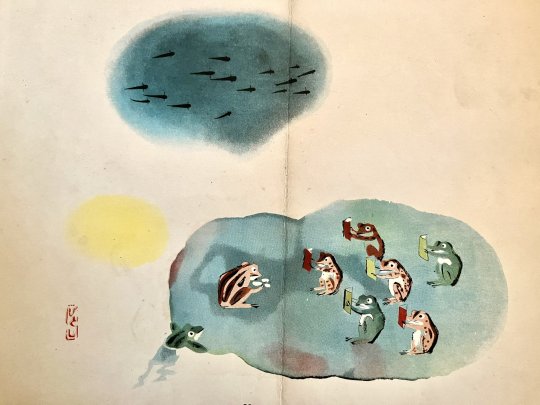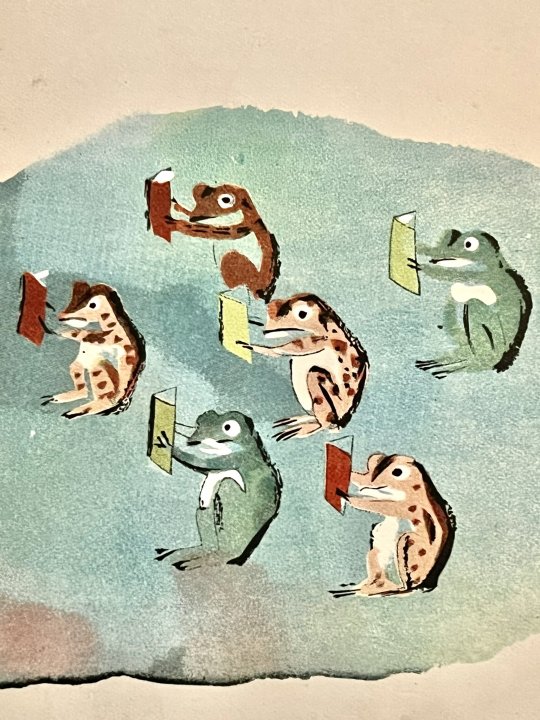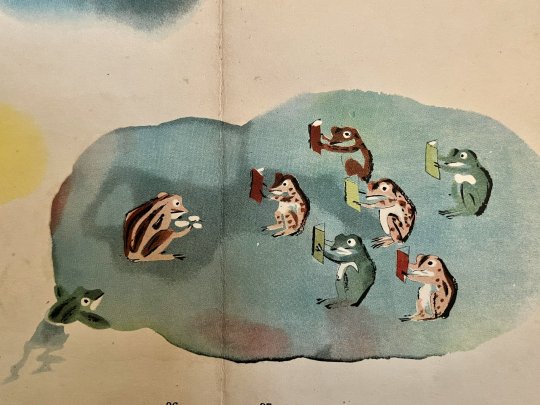In Kyoto and married. Spanish/English/Japanese. I’m just a hospital worker who happened to be the Japanese 1 & 2 tutor in Uni. Message/ Inbox open. If you wanna donate to help our community garden. Feed the neighborhood -> Cashapp $vm180
Last active 3 hours ago
Don't wanna be here? Send us removal request.
Text

#japanese#learning japanese#japan#langblr#japanese vocab#langblog#anime#manga#tumblr language#japanese vocabulary#japan travel#japanese langblr#japanese language#hirargana#kanji#plants#shojo#shonen
28 notes
·
View notes
Photo

Takato Castle Ruins Park (高遠城址公園, Takatōjōshi Kōen) is reputedly one of the three best locations to see cherry blossoms in Japan, along with Hirosaki Castle and Yoshinoyama. There are about 1500 cherry trees across the park’s compound, providing great cherry blossom views each spring. A cherry blossom festival is held annually, usually late March to April. Takatō Castle, built in the 16th century, became home to a cadet branch of the Naitō clan during Edo period. Today, only some foundations are left but the place is definitely worth a visit.
113 notes
·
View notes
Photo



A kunai 苦無, is a Japanese tool thought to be originally derived from the masonry trowel. The two widely recognized variations of the kunai are short kunai 小苦無 shō-kunai and the big kunai 大苦無 dai-kunai. Although a basic tool, in the hands of a martial arts expert, the kunai could be used as a multi-functional weapon. The kunai is commonly associated with the ninja, who used it to gouge holes in walls. Many popular manga characters use kunai as both their primary and secondary weapons.A Kunai normally had a leaf-shaped blade and a handle with a ring on the pommel for attaching a rope. The attached rope allowed the kunai’s handle to be wrapped to function as a grip, or to be strapped to a stick as a makeshift spear. As a weapon, the kunai is larger and heavier than a shuriken and with the grip could also be used in hand-to-hand combat more readily than a shuriken.
85 notes
·
View notes
Text
13K notes
·
View notes
Text
I just saw a phrase that i studied yesterday on my favorite cat channel!
水分補給 - hydration (or a choppier translation, water replenishment).
My joy is immeasurable and my day has been made
I hope to draw her on my main when my art skills are good enough

Just realized i never write the hiragana for my vocab
It's an effective way for me to study so i can quickly read and understand it when i see it out in the wild (like in this case)
But here ya go
水分補給 [すいぶんほきゅう]
55 notes
·
View notes
Text

#japanese#learning japanese#langblog#japan#langblr#anime#japanese vocab#manga#tumblr language#japanese vocabulary#shonen#shonen jump#shojo#shojo manga#japanese grammar#japanese language#japanese langblr#japan travel#asian#japanese kanji#hirargana#kanji#travel
16 notes
·
View notes
Text
Does anyone have recommendations for Chinese or Japanese speaking youtubers?
44 notes
·
View notes
Text

#learning japanese#japanese#langblog#japan#langblr#japanese vocab#anime#tumblr language#manga#japanese vocabulary#japanese langblr#japanese language#kanji#hirargana#anime and manga#shonen#shojo#anime weeb#weebcore#asian
44 notes
·
View notes
Text
What’s In a Pocchiri? Part 4
I’m trying to cover all of the gokagai before I explore others, so let’s take a look at a new one this time!

Image courtesy of Cliff CLF. Materials: Tortoise Shell, Abalone Shell, Mother of Pearl, Gold, Peridot, Aquamarine, Tourmaline, Sapphire, Ruby, Diamond, and Topaz. Motifs: Modern Art Peacocks Owned By: Yoshifumi (よし冨美) in Miyagawa Cho This one is not only a stunner, but filled with so many layers of ornamentation! First, a look at the motifs! This is really hard to peg down as I don’t think that there is a singular theme here besides it being a creative work of modern art. Miyagawa Cho is known for its unique and modern pocchiri, so this one takes a bit of a spin on that to create this stunner. Looking at it from an abstract point of view it’s possible that the motifs here are peacocks, as the left side looks almost like an Art Deco style arrangement of peacock feathers while the right side takes an even more modern and simplistic take on those same luxurious tail feathers. During the 1980s and 1990s circular peacocks were popular on kimono, so I wouldn’t be surprised if this was based on those! Looking at the materials there’s a great amount of them to unpack here. The base of this piece is made from tortoise shell, as can be seen in the bottom middle where the natural colors of the shell have been left in to show off just how expensive this piece is. Only a handful of artisans can work with tortoise shell in Japan, so their products carry a hefty price tag. From there some shell, likely abalone for the blue and mother of pearl for the white, was inlaid along with beautiful painted gold and lacquer. The gold almost seems 3D in some places and this was likely done to make the piece feel more three dimensional. It’s almost hard to believe that this piece is lacking in depth in real life, but the artistry here speaks for itself! Judging by the small amounts of metal that we can see along the outside this piece appears to be set into gold, so its cost must have been astronomical! In the middle of the tortoise shell we have two different types of geometric patterns made in solid gold, likely 12k-18k, that have many different precious stones set into them! On the left we have repeating circles with pears on the outside that’s broken up by circular bands. On the right we have marquise stones patterned with round stones that feature some slightly squiggly gold lines in between. To the far right there’s simply two lines of simple gold with three round stones as accents. There’s so many different colored stones that the rainbow they produce is what keeps this piece dazzling! Some of the easiest ones to spot are peridot (light green), topaz (brown/orange), aquamarine (light blue), and tourmaline (purple and pink). On the right side we can see a dark blue stone that’s a sapphire, a red stone beside it that’s a ruby, and a few small clear stones that are most likely diamonds. Surprisingly this piece is much larger than the average pocchiri, but to fit in so much detail it kinda makes sense. Here you can see this piece being worn by maiko Fumitama (富美珠):

Image courtesy of Cliff CLF.
183 notes
·
View notes
Text

#japanese#langblog#learning japanese#japan#japanese vocab#langblr#manga#anime#tumblr language#japanese vocabulary#japanese kanji#learn kanji#study kanji#kanji#hirargana#japanese language#japanese langblr#asian#shojo#shonen#anime and manga#anime weeb#weebcore#weebshit#japan travel
103 notes
·
View notes
Text
noruniru said: Please share your dehumidifying essentials kit, it’s my first summer living in Tokyo ><
Get a room dehumidifier 除湿機 、unless you have a good air con with a similar function.
Sheets for your closets 衣類用除湿シートwill protect clothes (and shoes! you get mold on leather shoes!) against moisture. If possible, don't cram clothes together.
Moisture absorbers 湿気取りcan be put anywhere, including in food cupboards or small spaces under a kitchen sink (for example). You can buy them in disposable or reusable containers.
Cooling mattress pad ひんやり敷パッド for your bed. Not dehumidifying, but cooling nonetheless.
Standing fan, tower fan, desk fan, handheld fan, whichever your prefer.
Buy a parasol. You will NOT regret it.
Always carry a face cloth with you to wipe sweat off your face.
I swear by loose-fitting cotton clothes, and I don’t care how wrinkled I look. It's hot, damnit.
My personal secret, and ultimate indulgence, is Clarins Aroma Eau Dynamisante: feels cool, smells gorgeous. ٩( ᐖ )و
Do whatever helps. Pray. Umeshu on ice. Think of autumn. Good luck!
If anybody wants to add tips in the comments, please do!

157 notes
·
View notes
Text



A poem by Hachijo Saijo, illustrated by Hitoshi Kiyohara Medaka tokaeru 1934 Published by Kanai Shinseido
西條八十の詩に清原斉が描いた作品 「めだかとかへる」
名作絵入童謡 「うさうさ兎」1934年 金井信生堂より
377 notes
·
View notes










